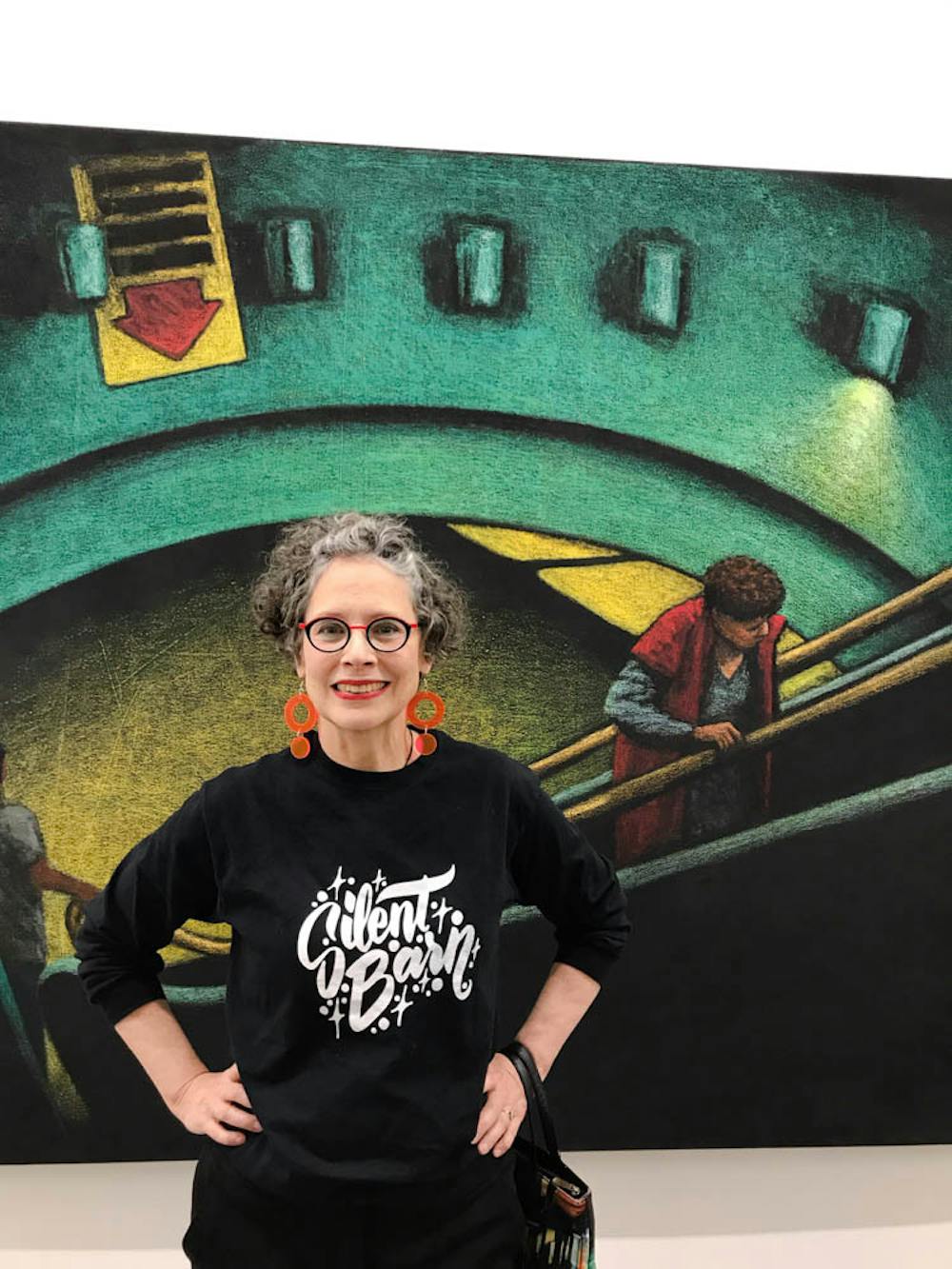University community members gathered at the List Art Center Wednesday for a talk with Jane Dickson, an active artist in New York City in the 1980s. The talk was sponsored by the Visual Art Department and centered around Dickson’s work in the street, installation and digital art scene.
Dickson began her presentation by screening a video of her works depicting scenes of New York City nightlife. The videographer, artist Loren Munk, moved the camera to focus on certain aspects of the paintings, which were completed on unconventional canvasses such as sandpaper and astroturf. As he filmed and commented on Dickson’s work, audience members were able to see the pieces in great detail, emphasizing the vivid colors and textures of her paintings.
Shortly after showing the video, Dickson went on to give a summary of her work and career. She showed a number of photographs of animated advertisements that she designed when she started out as a digital animator for the first Times Square light boards during the ’80s. Much of her inspiration for her other artworks came from her experience on the night shift working the Times Square light boards, she stated in a video. As she explained in her talk, “When I went home, I kept finding myself painting canvases black because I wanted to recreate that power of light coming out of darkness, and working the night shift. … I was looking at this neon, … and I felt like that was my world.” These late, solitary hours influenced her understanding of the artistic process. She continued, “I think one of the key things to being an artist … is that you like being alone because there is a lot of alone time.”
Many of Dickson’s paintings feature the underbelly of New York City, such as strip clubs and bars illuminated by glowing signs. However, Dickson is also known for her mosaics in the NYC’s Metropolitan Transport Authority, which feature New Year’s Eve revellers. Dancing figures, either alone or with a partner, colorfully celebrate in their own ways on the walls of New York subways. These more joyous figures strongly contrast the earlier dark subjects in her paintings. Dickson explained, “As a young person, I really wallowed in angst, and as I got older … (I wanted to) look for the brighter side.”
Dickson also took part in organizing the radical exhibition in the summer of 1980 titled “Times Square Show,” which included famed conceptual artist and RISD-MFA graduate Jenny Holzer. Dickson explained the creative process behind designing a hand-and-card graphic that became a motif for the show. She detailed the experiences, both her own and those of her friends, of being an artist in the gritty New York City art scene. Dickson was influential in shaping her peers’ careers; much of her colleagues’ art gained exposure through her animations displayed on the Times Square light boards.
Many of her paintings are now featured in acclaimed museums such as The Whitney and The Museum of Modern Art. Dickson concluded the talk by discussing her current work, such as her recent collaboration with her friend, famed street graffiti artist Crash, on a series of cardboard artworks. Showing a series of her more recent paintings, whose subjects ranged from motels to tunnels, Dickson mused on the elusive ideas of American darkness and fear, harkening back to her original experience with the New York City night.





